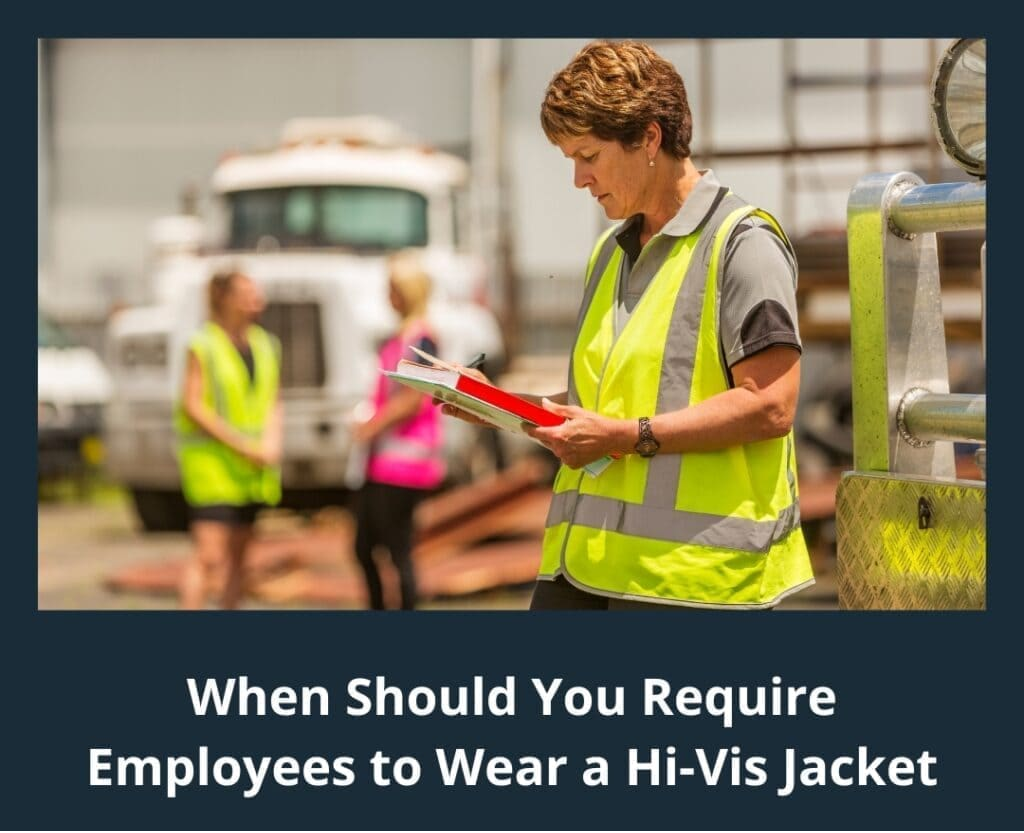
When Do Your Employees Need to Wear a Hi-Vis Jacket?
by Natalia Emilse Elbaba on Oct 22, 2024High-visibility (hi-vis) jackets play a crucial role in ensuring the safety of employees in various work environments. From construction sites to roadways, these jackets enhance visibility, helping to prevent accidents and improve safety. But when exactly should your employees be wearing them? Let’s break it down.
Why Hi-Vis Jackets Matter?
Hi-vis jackets are designed to make workers easily seen in low-light conditions or when working near moving vehicles. They are typically made from bright colors and feature reflective strips to enhance visibility. Wearing hi-vis clothing is not just a recommendation; in many cases, it’s a legal requirement for specific industries.
Situations That Require Hi-Vis Jackets
1. Construction Sites
In construction zones, workers are often surrounded by heavy machinery and vehicles. Wearing hi-vis jackets is essential for:
- Visibility to Operators: Heavy equipment operators may have limited sightlines; hi-vis jackets ensure workers are easily seen.
- Alerting Nearby Workers: Bright colors help signal presence to others on site, reducing the risk of accidents.
2. Roadwork and Traffic Control
Employees working on or near roadways are at a high risk of accidents. Hi-vis jackets should be worn when:
- Directing Traffic: Personnel guiding vehicles or pedestrians must be easily visible to avoid mishaps.
- Setting Up Signs: Workers placing or adjusting road signs should wear hi-vis gear to ensure they are seen by passing vehicles.
3. Warehouses and Distribution Centers
In bustling warehouses, the movement of forklifts and other vehicles is common. Hi-vis jackets are vital when:
- Operating Heavy Equipment: Workers handling or working near machinery need to be visible to prevent collisions.
- Walking Through Busy Areas: Employees moving through crowded spaces should wear hi-vis jackets to enhance their visibility.
4. Outdoor Work in Low-Light Conditions
Employees working outdoors during dawn, dusk, or nighttime should wear hi-vis jackets to ensure they are seen. This includes:
- Maintenance Workers: Those performing tasks outside during low-light hours need to be easily identifiable.
- Landscapers or Gardeners: Workers in public areas should wear hi-vis to ensure pedestrians can see them.
5. Emergency Response Situations
During emergencies, such as natural disasters or accidents, responders often need to wear hi-vis jackets to be quickly identified. This is crucial for:
- Search and Rescue Operations: Personnel must be visible to each other and the public for safety and coordination.
- Medical Response Teams: First responders wearing hi-vis gear can be quickly recognized, aiding in efficient communication and action.
Legal Requirements
In many countries, there are regulations that mandate the use of hi-vis clothing in specific situations. Employers should familiarize themselves with local laws and industry standards to ensure compliance. Failure to provide adequate visibility gear can lead to serious safety issues and legal repercussions.
Choosing the Right Hi-Vis Jacket
When selecting hi-vis jackets for your employees, consider the following:
- Color: Bright colors like fluorescent yellow, orange, or green are most effective.
- Reflective Strips: Ensure jackets have reflective strips to enhance visibility, especially in low-light conditions.
- Fit and Comfort: Employees should be able to move freely while wearing the jackets. Choose options that allow for layering in colder weather.
Conclusion
Hi-vis jackets are a vital component of workplace safety in numerous industries. Understanding when your employees need to wear them can help prevent accidents and ensure compliance with safety regulations. By prioritizing visibility, you’re not just protecting your employees; you’re fostering a culture of safety and responsibility within your organization. Make sure your team is equipped with the right gear, and stay safe out there!


